Philips 2008 Annual Report Download - page 107
Download and view the complete annual report
Please find page 107 of the 2008 Philips annual report below. You can navigate through the pages in the report by either clicking on the pages listed below, or by using the keyword search tool below to find specific information within the annual report.-
 1
1 -
 2
2 -
 3
3 -
 4
4 -
 5
5 -
 6
6 -
 7
7 -
 8
8 -
 9
9 -
 10
10 -
 11
11 -
 12
12 -
 13
13 -
 14
14 -
 15
15 -
 16
16 -
 17
17 -
 18
18 -
 19
19 -
 20
20 -
 21
21 -
 22
22 -
 23
23 -
 24
24 -
 25
25 -
 26
26 -
 27
27 -
 28
28 -
 29
29 -
 30
30 -
 31
31 -
 32
32 -
 33
33 -
 34
34 -
 35
35 -
 36
36 -
 37
37 -
 38
38 -
 39
39 -
 40
40 -
 41
41 -
 42
42 -
 43
43 -
 44
44 -
 45
45 -
 46
46 -
 47
47 -
 48
48 -
 49
49 -
 50
50 -
 51
51 -
 52
52 -
 53
53 -
 54
54 -
 55
55 -
 56
56 -
 57
57 -
 58
58 -
 59
59 -
 60
60 -
 61
61 -
 62
62 -
 63
63 -
 64
64 -
 65
65 -
 66
66 -
 67
67 -
 68
68 -
 69
69 -
 70
70 -
 71
71 -
 72
72 -
 73
73 -
 74
74 -
 75
75 -
 76
76 -
 77
77 -
 78
78 -
 79
79 -
 80
80 -
 81
81 -
 82
82 -
 83
83 -
 84
84 -
 85
85 -
 86
86 -
 87
87 -
 88
88 -
 89
89 -
 90
90 -
 91
91 -
 92
92 -
 93
93 -
 94
94 -
 95
95 -
 96
96 -
 97
97 -
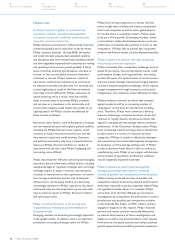 98
98 -
 99
99 -
 100
100 -
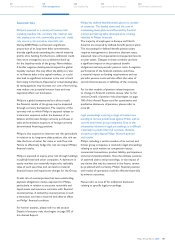 101
101 -
 102
102 -
 103
103 -
 104
104 -
 105
105 -
 106
106 -
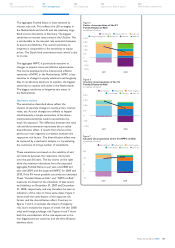 107
107 -
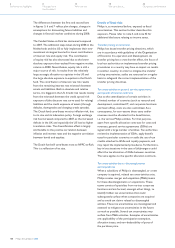 108
108 -
 109
109 -
 110
110 -
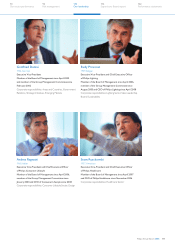 111
111 -
 112
112 -
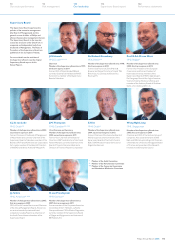 113
113 -
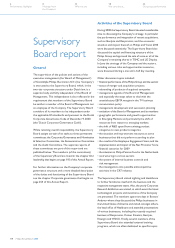 114
114 -
 115
115 -
 116
116 -
 117
117 -
 118
118 -
 119
119 -
 120
120 -
 121
121 -
 122
122 -
 123
123 -
 124
124 -
 125
125 -
 126
126 -
 127
127 -
 128
128 -
 129
129 -
 130
130 -
 131
131 -
 132
132 -
 133
133 -
 134
134 -
 135
135 -
 136
136 -
 137
137 -
 138
138 -
 139
139 -
 140
140 -
 141
141 -
 142
142 -
 143
143 -
 144
144 -
 145
145 -
 146
146 -
 147
147 -
 148
148 -
 149
149 -
 150
150 -
 151
151 -
 152
152 -
 153
153 -
 154
154 -
 155
155 -
 156
156 -
 157
157 -
 158
158 -
 159
159 -
 160
160 -
 161
161 -
 162
162 -
 163
163 -
 164
164 -
 165
165 -
 166
166 -
 167
167 -
 168
168 -
 169
169 -
 170
170 -
 171
171 -
 172
172 -
 173
173 -
 174
174 -
 175
175 -
 176
176 -
 177
177 -
 178
178 -
 179
179 -
 180
180 -
 181
181 -
 182
182 -
 183
183 -
 184
184 -
 185
185 -
 186
186 -
 187
187 -
 188
188 -
 189
189 -
 190
190 -
 191
191 -
 192
192 -
 193
193 -
 194
194 -
 195
195 -
 196
196 -
 197
197 -
 198
198 -
 199
199 -
 200
200 -
 201
201 -
 202
202 -
 203
203 -
 204
204 -
 205
205 -
 206
206 -
 207
207 -
 208
208 -
 209
209 -
 210
210 -
 211
211 -
 212
212 -
 213
213 -
 214
214 -
 215
215 -
 216
216 -
 217
217 -
 218
218 -
 219
219 -
 220
220 -
 221
221 -
 222
222 -
 223
223 -
 224
224 -
 225
225 -
 226
226 -
 227
227 -
 228
228 -
 229
229 -
 230
230 -
 231
231 -
 232
232 -
 233
233 -
 234
234 -
 235
235 -
 236
236 -
 237
237 -
 238
238 -
 239
239 -
 240
240 -
 241
241 -
 242
242 -
 243
243 -
 244
244 -
 245
245 -
 246
246 -
 247
247 -
 248
248 -
 249
249 -
 250
250 -
 251
251 -
 252
252 -
 253
253 -
 254
254 -
 255
255 -
 256
256 -
 257
257 -
 258
258 -
 259
259 -
 260
260 -
 261
261 -
 262
262 -
 263
263 -
 264
264 -
 265
265 -
 266
266 -
 267
267 -
 268
268 -
 269
269 -
 270
270 -
 271
271 -
 272
272 -
 273
273 -
 274
274 -
 275
275 -
 276
276
 |
 |

The aggregate Funded Status is least sensitive to
interest rate risk. This reflects the LDI strategies in
the Netherlands and the UK and the relatively large
fixed income allocations in Germany. The biggest
sensitivity to interest rates exists in the US plan. This
is attributable to the interest rate mismatch between
its assets and liabilities. The overall sensitivity to
longevity is comparable to the sensitivity to equity
prices. The Dutch fund contributes most, which is due
to its size.
The aggregate NPPC is particularly sensitive to
changes in interest rates and inflation expectations.
This can be explained by the interest and inflation
sensitivity of NPPC in the Netherlands. NPPC is less
sensitive to changes in equity valuations and longevity.
Due to its absolute exposure to equities, the biggest
sensitivity to equities still exists in the Netherlands.
The biggest sensitivity to longevity also exists in
the Netherlands.
Stochastic analysis
The sensitivities described above reflect the
impacts of separate changes in equity prices, interest
rates, etc. As such changes are unlikely to happen
simultaneously, a simple summation of the above-
mentioned sensitivities would overestimate the
total risk exposure. The difference between the total
risk and that summation represents the so-called
diversification effect. It results from the less than
perfect (or even negative) correlation between the
respective risk factors. The diversification effect may
be captured by a stochastic analysis, i.e. by analyzing
the outcomes of a large number of simulations.
These simulations are based on the volatility of and
correlations between the respective risk factors
over the past 30 years. The bar charts on the right
show the maximum deviations from the expected
aggregate Funded Status as per year-end 2008 and
year-end 2009, and the expected NPPC for 2009 and
2010, if the 5% worst possible outcomes are excluded.
These “Funded-Status-at-Risk” and “NPPC-at-Risk”
measures are based on the valuations of plan assets
and liabilities on December 31, 2007 and December
31, 2008, respectively, and may therefore be seen as
indicators of the risks on these same dates. Figure 5
shows both the contribution of the separate risk
factors and the diversification effect. Contrary to
figures 1 and 2, it excludes the impact of longevity
risk, but it includes the impact of credit risk (for 2008
only) and foreign exchange risk. Figures 6 and 7 show
both the contributions of the risk exposures in the
four biggest pension countries and the diversification
between them.
Figure 5
Factor decomposition of the 5%
Funded-Status-at-Risk
in millions of euros
(
1,500
)
(
1,000
)
(
500
)
0
5
0
0
1
,
000
1
,5
00
2
,
000
2,
5
00
20082007
diversi
f
ication
t
ota
l
r
i
s
k
equ
i
ty r
i
s
k
i
nterest rate r
i
s
k
forei
g
n exchan
g
e ris
k
i
n
f
lation risk
c
redit ris
k
Figure 6
Country decomposition of the 5%
Funded-Status-at-Risk
in millions of euros
(1
,
000)
(
500
)
0
500
1,000
1
,5
00
2,
000
20082007
t
ota
l
r
i
s
k
d
iversi
f
icatio
n
United Kingdom
N
etherland
s
U
nited State
s
G
erman
y
Figure 7
Country decomposition of the 5% NPPC-at-Risk
in millions of euros
total
r
isk
20082007
diversi
f
ication United Kingdom
N
etherland
s
(
75
)
0
75
150
22
5
U
nited States
G
erman
y
Philips Annual Report 2008 107
122
Performance statements
114
Supervisory Board report
110
Our leadership
94
Risk management
70
Our sector performance
